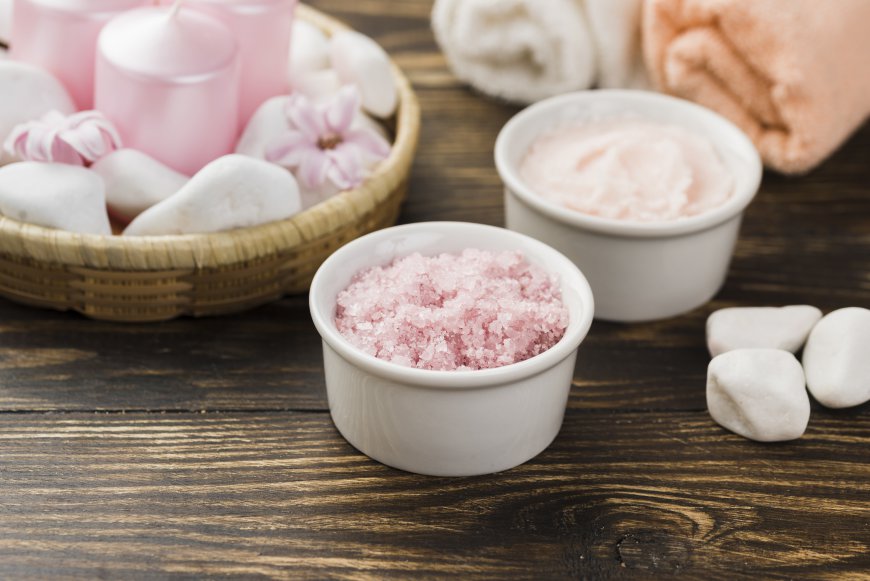pink edible salt wallpapers
Pink edible salt wallpapers represent a groundbreaking intersection of interior design, culinary innovation, and health-conscious living

The fusion of design, technology, and gastronomy has led to some extraordinary innovations in recent years. One of the more unexpected yet intriguing developments is the concept of pink edible salt wallpapers. This creation blends the aesthetic appeal of interior design with culinary art, resulting in a multifunctional surface that is not only beautiful but also edible.
Algohar World natural salt lamps that are believed to provide various benefits, combining both the aesthetic appeal and the potential health advantages associated with Himalayan salt lamps.
Origins and Inspiration Behind Pink Edible Salt Wallpapers
The Rise of Edible Architecture
The concept of edible architecture is not entirely new, having its roots in various cultural and culinary traditions. From gingerbread houses to artistic food presentations, the idea of making food an integral part of design has existed for centuries. However, recent advancements in material science and food technology have allowed designers to create edible elements that transcend the kitchen and become part of the living environment itself.
Pink edible salt wallpapers take this idea to a new level, transforming a staple culinary ingredient—salt—into a visually appealing and functional element of interior design.
The Popularity of Himalayan Pink Salt
Himalayan pink salt, known for its distinctive color and mineral-rich composition, has grown in popularity over the last decade. Often touted for its health benefits, it is used in various forms, from cooking to salt lamps and decorative salt blocks. The striking pink hue of this salt, combined with its reputed therapeutic properties, has made it a popular choice for decorative purposes. Pink edible salt wallpapers draw inspiration from this trend, blending functionality and health consciousness with a design-forward approach.
Composition and Production of Pink Edible Salt Wallpapers
The Role of Himalayan Pink Salt
At the heart of pink edible salt wallpapers is Himalayan pink salt. Harvested from ancient salt mines in the Punjab region of Pakistan, this salt is believed to have been formed over 250 million years ago. Its pink color comes from trace minerals such as magnesium, calcium, and potassium, which also give it its unique flavor and potential health benefits.
For the production of pink edible salt wallpapers, finely ground Himalayan salt is typically mixed with food-safe adhesives or binders, which allow it to adhere to a wallpaper backing. This process preserves the salt’s color and texture while ensuring that the wallpaper is safe to eat.
Edible Binders and Additives
To create a wallpaper that is both functional and edible, manufacturers use food-grade binders and additives. These substances ensure the salt adheres to the paper without affecting its taste or safety. Common binders include edible glues derived from natural sources like starch or gelatin. In some cases, thin layers of edible rice paper may be used to create a smooth, digestible surface.
Customization and Design Flexibility
Pink edible salt wallpapers are not limited to a uniform appearance. By varying the grain size of the salt and incorporating other edible elements, designers can create a wide range of textures and patterns. In some instances, edible ink or food-grade colorants can be used to print intricate designs directly onto the wallpaper, adding layers of complexity and aesthetic appeal.
Applications of Pink Edible Salt Wallpapers
Culinary Spaces
One of the most obvious applications of pink edible salt wallpaper is in culinary environments, such as kitchens, dining rooms, or restaurants. The wallpaper could serve both a decorative and functional purpose, allowing diners or chefs to season their food directly from the walls. Imagine a high-end dining experience where patrons peel off sections of the wallpaper to season their meals—this offers an interactive, sensory-rich experience that blurs the line between food and art.
Health and Wellness Spaces
Given the therapeutic properties often associated with Himalayan pink salt, pink edible salt wallpapers could be used in spas, wellness centers, or meditation rooms. The salt is believed to have purifying properties that can improve air quality by emitting negative ions, which are said to neutralize harmful pollutants. By incorporating salt into the wallpaper of a wellness space, it may contribute to creating a calming, purifying environment.
Wait: pink edible salt wallpapers are an innovative blend of aesthetics, functionality, and health-conscious design.
Hotels and Restaurants
In the hospitality industry, pink edible salt wallpapers could be used to enhance the guest experience in innovative ways. Luxury hotels could incorporate these wallpapers into themed rooms, offering guests a unique sensory experience. Restaurants, particularly those focused on experiential dining, could use edible salt wallpapers to introduce a tactile, interactive element to their décor.
Conclusion
Pink edible salt wallpapers represent a groundbreaking intersection of interior design, culinary innovation, and health-conscious living. Combining the visual appeal of Himalayan pink salt with the functionality of wallpaper, this concept offers a multisensory experience that challenges traditional notions of both food and design. As technology continues to evolve, the possibilities for edible architecture and design are endless, opening the door to new ways of thinking about the spaces we inhabit. While there are challenges related to cost, maintenance, and safety, the potential benefits in terms of aesthetics, health, and sustainability make pink edible salt wallpapers a compelling innovation for the future.

 Tagxa1122
Tagxa1122